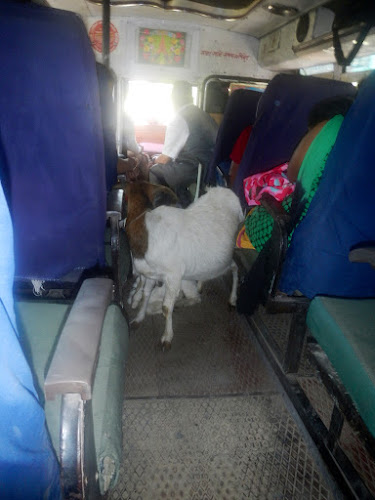 |
| Good morning Phewa Tal |
 |
| Phewa Tal |
After sleeping on an actual bed we woke refreshed and ready to embrace Pokhara. Up early we headed down to the lake to see what all the fuss was about. We quickly realised that all of the fuss was absolutely, positively justified. The beautiful lake sprawled into the distance and the shapes and colours of the surrounding mountains reflected perfectly on its smooth surface. Colourful boats bobbed on the ripples as we wandered along the East bank. While the path unfortunately did not continue right around the lake to the South side from where you could properly enjoy the views of the snowy peaks, we caught glimpses of them from the boat jetty where tourist paid to be shipped across the lake.
 |
| American set breakfast |
We wandered back to the main road, enjoying the peace and quiet that this time of the morning brings to a city. Coun had told us about Pokhara's 'set breakfasts' that most restaurants boast. We settled on an American Style breakfast and indulged in eggs, toast, sausage, beans, roast potatoes, capsicum and tomato, fruit, muesli, curd, fresh juice and coffee. Pokhara was having quite an impact on our waist lines and we hadn't even been there 24 hours.
As our hotel had no power this morning there was no rush to get home. We wandered slowly checking out travel agencies and trekking gear shops. When we arrived home to find that the wifi wasn't working thanks to the lack of power Chris put his electrician cap on and went to find the router. He returned triumphant having jiggled the wifi back to life. It didn't last long though as the real electrician arrived and, in fixing the problem, had to turn the whole thing off.
We went out again this time to finally get our laundry done. We agreed to pay about $4, which was more than we should have but, considering the amount of Gaunshahar dirt that was ingrained in our clothes, $4 was a bargain.
We found a little shop that sold multipurpose tubes of material that we could use as neck warmers, headbands etc. We were excited by the price of 30 rupees but, when we returned later to purchase a second one, we were informed that there had been a mistake and the actual cost was 100 rupees. No wonder people had called us liars when we told them how much we bought the first one for. They had limited material designs too so one of our delightful neck warmers is leopard print.
We couldn't resist going back to Godfather's for lunch and ordered spaghetti bolognese and lasagne. They were both the closest thing to actual Italian food we have seen on our journey so we didn't mind that they weren't perfect. After lunch we purchased our bus tickets to Kathmandu (there was no way we were getting a local bus with the goats all the way there) and changed some Indian rupees into Nepalese rupees. Then, as the rain showers started and cyclonic wind stirred all of Pokhara's dust up, we went shopping!
At Polar Trekking Equipment Shop we decided we may as well make all of our necessary purchases to save rushing around in Kathmandu. And buying everything in one shop meant we had some bargaining power. Two down jackets, one down sleeping bag, two head torches, two bandanas, two belts, two long sleeve breathable shirts, one pair of fleece pants, one wide brimmed hat, two walking poles and one large waterproof duffle bag later we needed to bargain hard. We settled on a price of 21500 Nepalese rupees or about $250. Not bad considering that one down jacket in Australia would set you back about $800. Then we had the issue of cash. While we had changed money earlier we did not have enough. We did have Indian rupees though and the shop keeper was happy enough to take those at an exchange rate without commission. I was left as collateral while Chris went to collect the moola. Meanwhile, the shopkeeper and I laughed at his Russian customers' shoes and discussed the pros and cons of Israeli vs Russian tourists in Nepal. For the record, Israelis are apparently loud but take less drugs while the Russians are quiet but take many drugs. The shopkeeper liked us, gave us directions to the peace pagoda for our adventure tomorrow and even through in a free map of Pokhara. What a guy!
 |
| Sweet and sour pork! |
We returned home to play with our new toys and dress up in our new trekking attire. The leopard print neck warmer and pink diamanté encrusted belt were a great combination with the pink bandana.
When six o'clock rolled around we went out for some dinner. We ended up at The China Town restaurant that we had spotted earlier in the day. The food was amazing and exactly what we needed. Vegetable chowmein, sweet and sour pork, chilli spare ribs and fried pork momos. Add a couple of beers and we were in heaven. We left the restaurant to find a rainy Pokhara awaiting us and our walk home. As the power was still off when we arrived back at Hotel Harmony we had an early night.
 |
| Chris' visit to The Great Wall |




















































